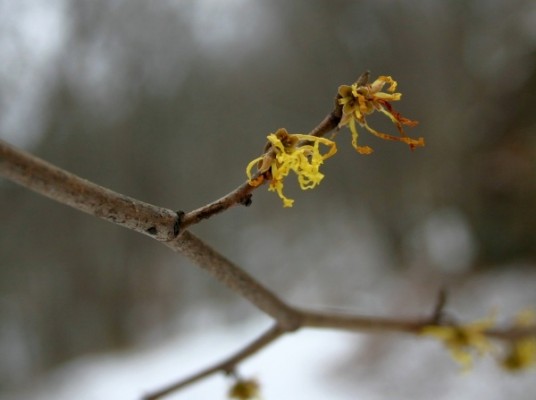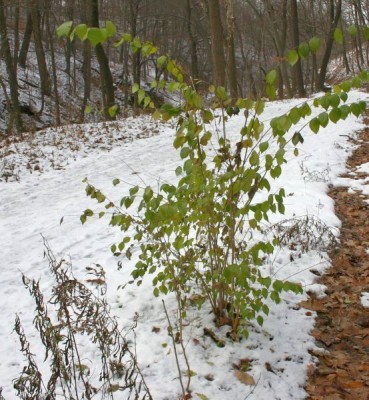
Though it’s been cold and snowy I found signs of life in Schenley Park on Thanksgiving Day.
Above, witch hazel is blooming along the Lower Trail. The yellow flowers don’t stand out but once you notice them you’ll see several trees sporting lemon-peel petals.
Below, bush honeysuckle stands out green against the snow. This out of synch condition reminds us that this plant is from another country.

When you see green deciduous plants in the snow, check them out. They’re often imports.
(photos by Kate St. John)
Yes, petals like lemon zest curls! A wonderful description of American Witch-hazel flowers.
I’m wary of non-indigenous plants because I think greening up at weird times of years must give them an edge over native species. Ditto at home, so I keep predators away and feed native birds with this yankee flipper feeder.
Never thought about Winter green plants being misplaced. Makes sense.
I love habitat restoration work and do it along the Lower Trail, a Rails to Trails path in Blair and into Huntingdon County. The Winter green syndrome you describe makes it so easy to find privet and bush honeysuckle and cut them back to make room for planting natives. I enjoy being out on winter days and finding plants that I might have missed during the regular growing season. The other easy indicator for the non-native invasives is the absence of insect damage – they aren’t really part of the ecosystem, not having evolved here, so their natural toxins work well on the native insects who have not co-evolved.